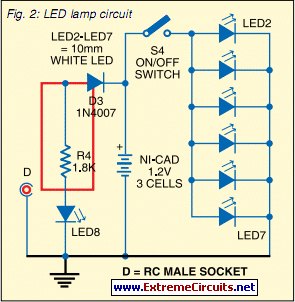This simple key-operated gate locking system allows only those persons who know the preset code to open the gate. The code is to be entered from the keypad within the preset time to operate the motor fitted in the gate. If anyone trying to open the gate presses a wrong key in the keypad, the system is disabled and, at the same time, sounds an alarm to alert you of an unauthorized entry. Figs 1 and 2 show the block and circuit diagrams of the key-operated code locking system, respectively. Connect points A, B, C, D, E, F and ground of the circuit to the respective points of the keypad. Keys S7, S16, S14 and S3 are used here for code entry, and the remaining keys are used for disabling the system. It is very important to press the keys in that order to form the code. To start the motor of the gate, press switches S7, S16, S14 and S3 sequentially. If the keys are pressed in a different order from the preset order, the system will lock automatically and the motor will not start. Fig. 1: Bl...

Comments
Post a Comment